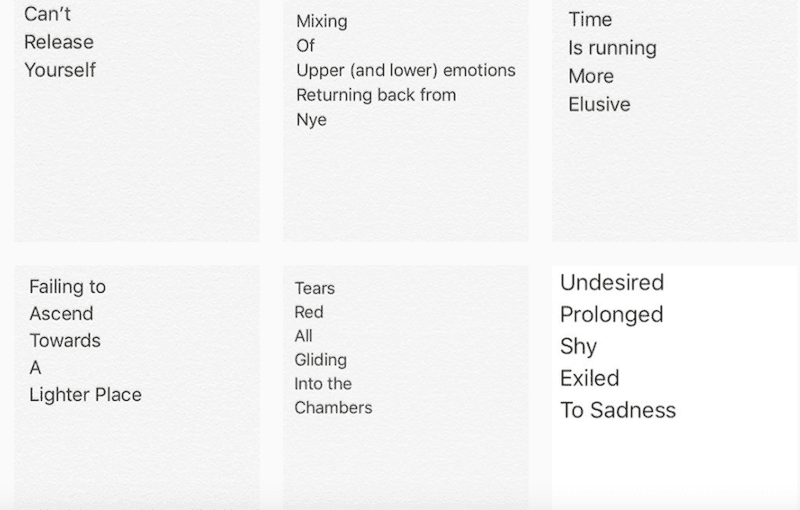Instagram recently surpassed Snapchat as the favorite social media platform for teens. Like most teachers, I read this statistic with an involuntary eye-roll. As if I didn’t know my students were glued to their Insta-perfect online lives.
But it also led me to a nagging question: how could I infiltrate my students’ Insta-world with sneaky lessons and learning opportunities? I started with creating a school Instagram account and muddled along from there.
What I learned was that Instagram doesn’t have to be our classroom enemy; we can easily make it our ally. Check out these five easy Instagram-based Language Arts lessons and assignments to add some digital engagement to your LA classroom.
1. Use Instagram to teach students about the concept of theme.
Last year, while using my school Instagram account, I took a short video of a student who was sharing a book they read and asked them to post it as well. The student refused, quickly informing me that this post didn’t fit their “theme.”
I was confused, but intrigued—if students were consciously constructing “themes” using Instagram, logically one could use Instagram to teach the concept of theme. So, that’s what I began doing—and found students much more receptive than reading about it in a textbook.
The first step is to have them analyze the Instagram accounts of famous people, places or businesses for evidence of purposely constructed theme(s).
Clothing brands are a great starter point for this discussion. I like to show two really opposing brands (i.e. Old Navy and Ralph Lauren) and have students observe the images from each company, then discuss what messages or themes each company is trying to communicate through their images, even though they are selling the same commodity (clothing).
Next, I have students analyze their own Instagram accounts for evidence of theme(s); a logical final step is to have students post a series of images or videos depicting a theme of their choice, then discuss how they purposely constructed and communicated theme through their chosen images and videos.
Extend the lesson by having students post images or short videos of elements of a text that depict a particular theme.
2. Study Instapoets and write Instapoetry.
If you haven’t heard of Instapoetry or Instapoets don’t panic—it’s an emerging genre of poetry in the digital age. And it’s one of my favorite ways to use Instagram in language arts.
Essentially, Instapoet starts like Rupi Kaur and Atticus write and share short, free verse epigrams and couplets that centralize on the human condition. Some critics cringe at its existence, while others claim that Instagram has “saved poetry.”
I dipped my toe into studying and writing Instapoetry with my intermediate (grade 8) students this past school year and had great success. We started off analyzing the work of Instapoets, then moved to playing with the craft and finally creating our own, thematic Instapoetry accounts. We followed each other’s work and voted on our favorites to culminate the unit.
To get students on the right path, in class we co-created (though their input) my own account (@mommypoetry) and discussed how choice of handle name, image, and poems contributed to a consistent topic/theme for an Instapoetry account.
Then, students were set free to create their own Instapoetry accounts and posts. See an image from one of my students’ accounts below who focused on acrostic poetry in his account:

Feel free to steal a copy of my assignment (on Google Docs): Become an ‘Insta’poet!
3. Book Talk using Instagram.
I’m a big fan of Penny Kittle and her text, Book Love which challenges teachers to light a fire for reading in their students. One of Penny’s methods of engaging students in reading is to “book talk” one text from her reading library at the beginning or end of each class.
Using Instagram to book talk via images or short videos adds a digital twist to this practice, saves a couple minutes of classroom time and creates a running log of book talks for students to save, share or revisit on their own time.
A fun assignment to tie into this practice for students is to have them create an Instagram book talk post and share it with their classmates and teacher each time they read an independent novel.
Check out one of my book talk posts on my school Instagram account below.
4. Post/share grammar memes.
Who doesn’t love a great grammar meme?
Often touted as the most boring lesson topic in the Language Arts classroom, grammar can be revived through sharing memes about grammar, discussing the lessons behind them, then asking students to create and share their own grammar memes.
I start this activity by having students use Instagram to search #grammarmemes and share their favorites with the class.

Next, I’d move into an actual lesson regarding a couple grammar topics and finish with having students create their own #grammarmemes to post and hashtag on Instagram.
An easy website I like to use with my students for this activity is: https://makeameme.org/.
5. Build vocabulary using Instagram.
Vocabulary building is all about word exposure. Students need to see and hear words being used in context to make them their own. This fact led me to infiltrate my students Insta-feeds with …..WORDS!
A variation of this activity is to have students post words of the day from a text they are reading or new words they come across in daily life. Students can also show word comprehension by posting an image that defines a word.
Teaching and sharing vocabulary through Instagram can be done in a variety of ways—the sky is the limit!
More ways to use Instagram in language arts class
Once you start, you’ll find a plethora of ways to weave it into your daily practice. To keep you brainstorming, in addition to the ideas I’ve elaborated above, I’ve also used my school Instagram account to…
No comments:
Post a Comment